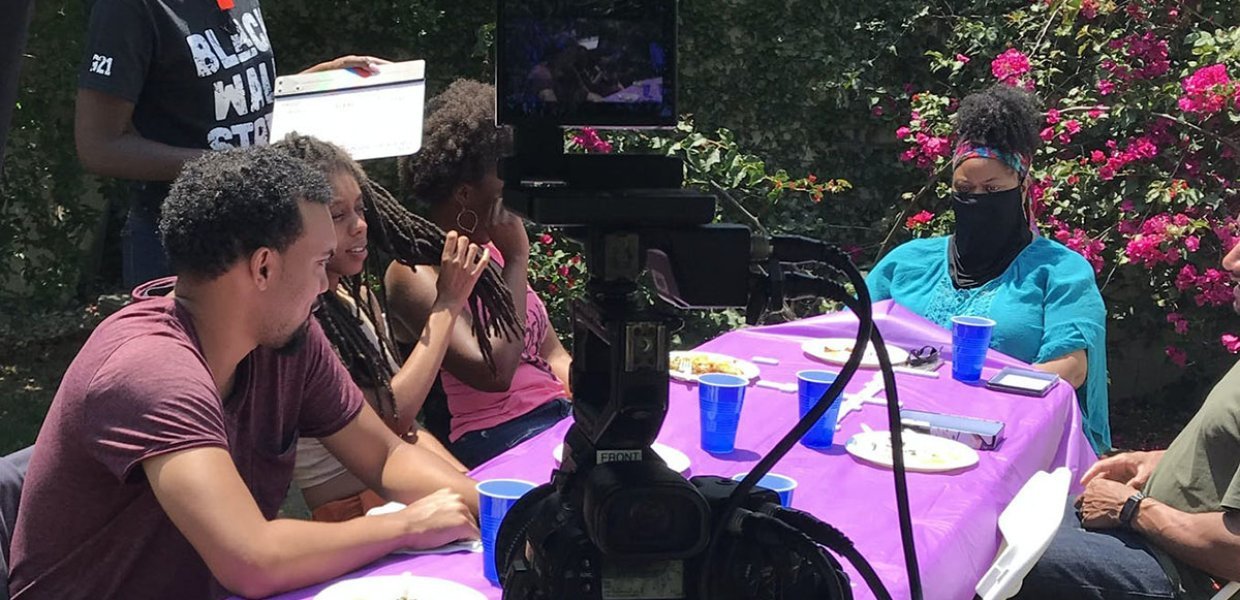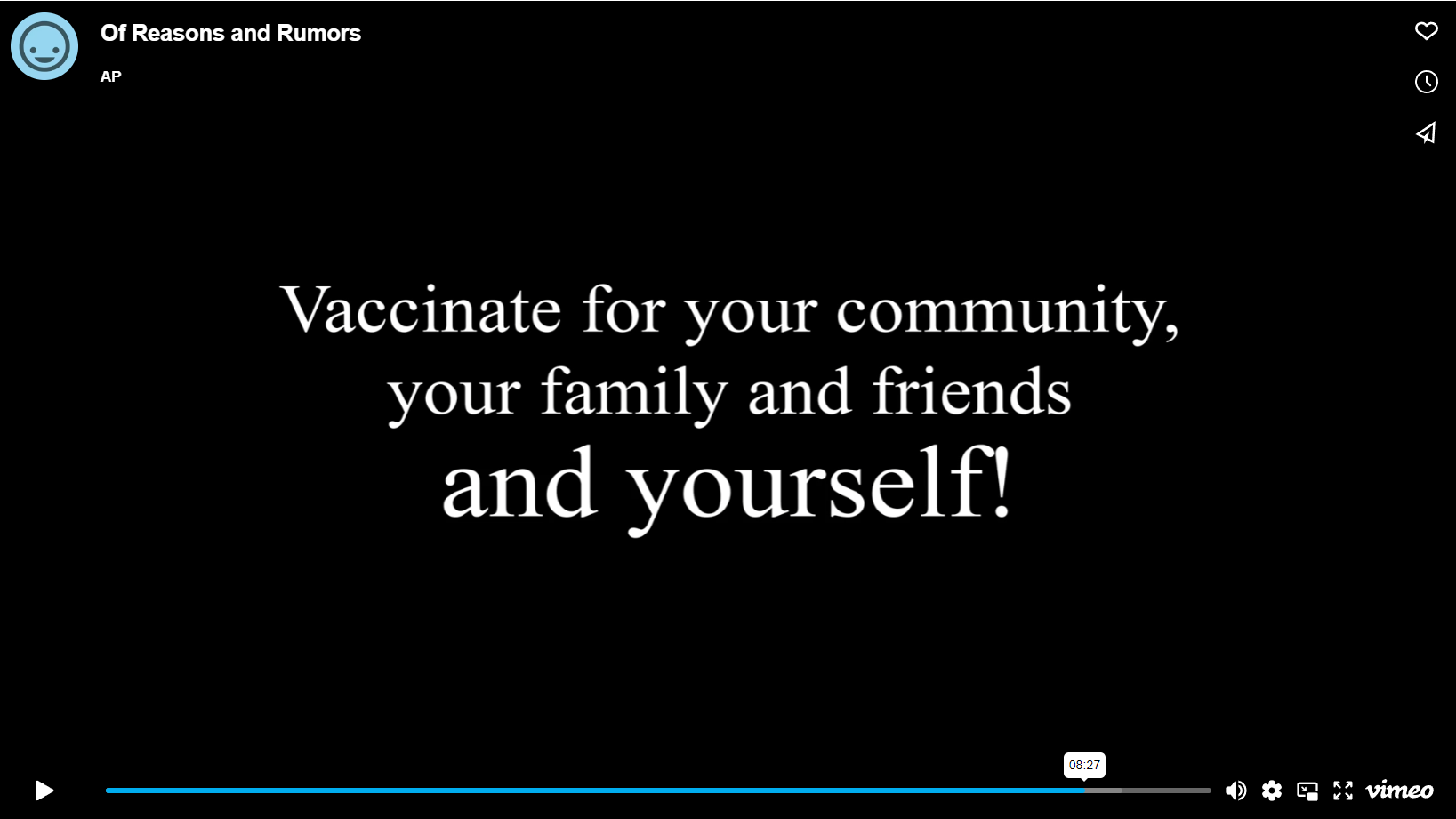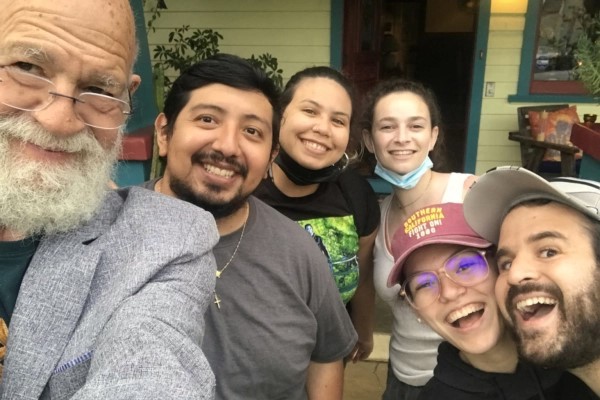SC CTSI partners with filmmakers and public health communicators to counter vaccine hesitancy among underserved populations
When reports of a highly infectious novel coronavirus emerged from China in January 2020, Sheila Murphy joined a team of fellow public-health experts at the Southern California Clinical and Translational Science Institute (SC CTSI).
“Prior to 2020, the public
health community had been bracing ourselves to combat a highly transmissible and
rapidly mutating virus. We knew it was not a matter of if, but when such a
virus would emerge. By January 2020, we recognized that COVID-19 had the
potential to become a worldwide pandemic”, said Murphy, PhD, professor of
communication at the USC Annenberg School for Communication and Journalism as
well as professor of Population and Public Health Sciences at the Keck School
of Medicine. “We knew there would be misinformation not only about how the
virus spreads, but especially about alleged risks of a potential vaccine. From
experience, we knew that for historical, socioeconomic and cultural reasons underserved
populations would be less likely to get vaccinated. So, minority groups needed
special outreach to address vaccine hesitancy.”
Murphy, Jeremy Kagan and Lourdes Baezconde-Garbanati had previously completed a National Institutes of Health-supported study, the award winning Tamale Lesson, that identified which storytelling techniques are likeliest to change attitudes and behavior.
“There are two key ingredients that make information embedded in a story persuasive and lead to behavior change. First, a narrative is most effective when there is a character audience members can identify with,” said Murphy.

Identification with a
character can be some combination of a shared ethnicity, language, age, family
role, or other connection.
“Second, the story must be
sufficiently absorbing, allowing audience members to become transported into
the narrative. In this transported state audience members are less suspicious
and more accepting of new information. Without those two key ingredients –
identification with a key character and being transported into the story – the
messaging is not effective.”
In January of 2020, Murphy once
again partnered with Jeremy Kagan, a film director professor at the USC School
of Cinematic Arts, and Lourdes Baezconde-Garbanati, Associate Dean for
Community Initiatives at the Keck School of Medicine and Professor in
Population and Public Health Sciences to develop three short, narrative films that
countered prevalent vaccination myths. This was possible with funding from
the W. M. Keck Foundation to Michelle Kipke and Baezconde-Garbanati for
Vaccinate L.A., in a joint effort between CTSI, CHLA and USC. To takle this new
challenge on coronavirus, they were joined by Ashley Phelps, a graduate student
at the Annenberg School for Communication at USC, who served as co-producer.
“We had learned from previous
public health intervention campaigns that to achieve behavior change, and increase
adoption and adherence to new mitigation behaviors for reducing coronavirus risk,
we needed to develop messaging that resonated with the values of each cultural
audience we were working with. We also had to address the fears and vast misinformation
that was prevalent in each community fueling hesitancy in vaccine adoption,’
said Baezconde-Garbanati.
Each film drew information
from focus groups and listening sessions that were held by staff in Vaccinate
L.A., supported in part, by SC CTSI staff technical expertise. They vividly
dramatize a family or community discussion over COVID-19 vaccination. Each
story exposes common vaccination falsehoods and presents compelling arguments about
why family members should get vaccinated to protect themselves and their loved
ones.
SC CTSI staff members
organized listening sessions with underserved communities to learn which
vaccination messages would be most effective for them. At each stage of script
writing, Murphy collaborated with SC CTSI staff to ensure that the stories
countered key myths of vaccination and the overall narrative resonated with the
intended community members.
“Together, we went through
various versions of scripts until we were all happy that the important messages
came through clearly,” said Murphy. “They would look at the script and say,
‘This works, but this doesn’t. Could you make this point better?’”

Before the first COVID-19
vaccines became widely available, the filmmakers had already completed “Of
Reasons and Rumors,” a film made on location in Eastern Los Angeles about a
close-knit Latino family who face conflict when one member is hesitant to get
vaccinated. The story was written and filmed by Latino graduate students from
USC.
The team’s second film, “Happy
Birthday, Granny,” drew on African American filmmaking talent from USC. The
story is about an African-American family roiled by a debate over vaccination
myths and hesitancy that could affect the safety of their 80-year-old grandmother.
A third film, “Team Player,”
focuses on vaccination misinformation and hesitancy among parents and
school-age children.
Importantly, each of the
films emphasize the crucial role of women in family decisions about
vaccination.
“We know that the single
greatest predictor of whether a child is vaccinated is whether their mother is
vaccinated,” said Murphy. “We want our message to reach women because once you
get them on board, then their husbands, but even more importantly, their kids
are more likely to get vaccinated.”

Seeing the success of the
films, Reasons and Rumors was utilized as part of a training produced by
Baezconde-Garbanati and Kipke with KSOM and CTSI staff, to build capacity among
a network of over 500 Community Vaccine Navigators (CVNs). CVNs were composed
of promotores de salud and community health workers in the Vacunas-Health
Research Services Administration (HRSA) program of the National Alliance for
Hispanic Health. As of June of 2022, 65,962 individuals in the Hispanic
community had received either a first or second COVID-19 vaccine dose, and
30,484 a first or second booster with the assistance of trained CVNs in 38
cities across the United States. By September 2022, a total of 6,570,792
persons had received outreach and education information on coronavirus and of
these 247,817 agreed to get vaccinated.
The three films were part of
a the broader efforts of Vaccinate LA, which involved USC, hospitals, local
governments, employers, and hundreds of community organizations. The films have
been shared widely on social media, the coalition partners, the California
Department of Public Health, California Governor Gavin Newsom’s office, the Los
Angeles Unified School District and the White House Office of Public
Engagement, COVID-19 Community Task Force.
These films showcased the
power of narrative, culturally-tailored storytelling to influence health
decisions in diverse communities in a real-world public health crisis.



